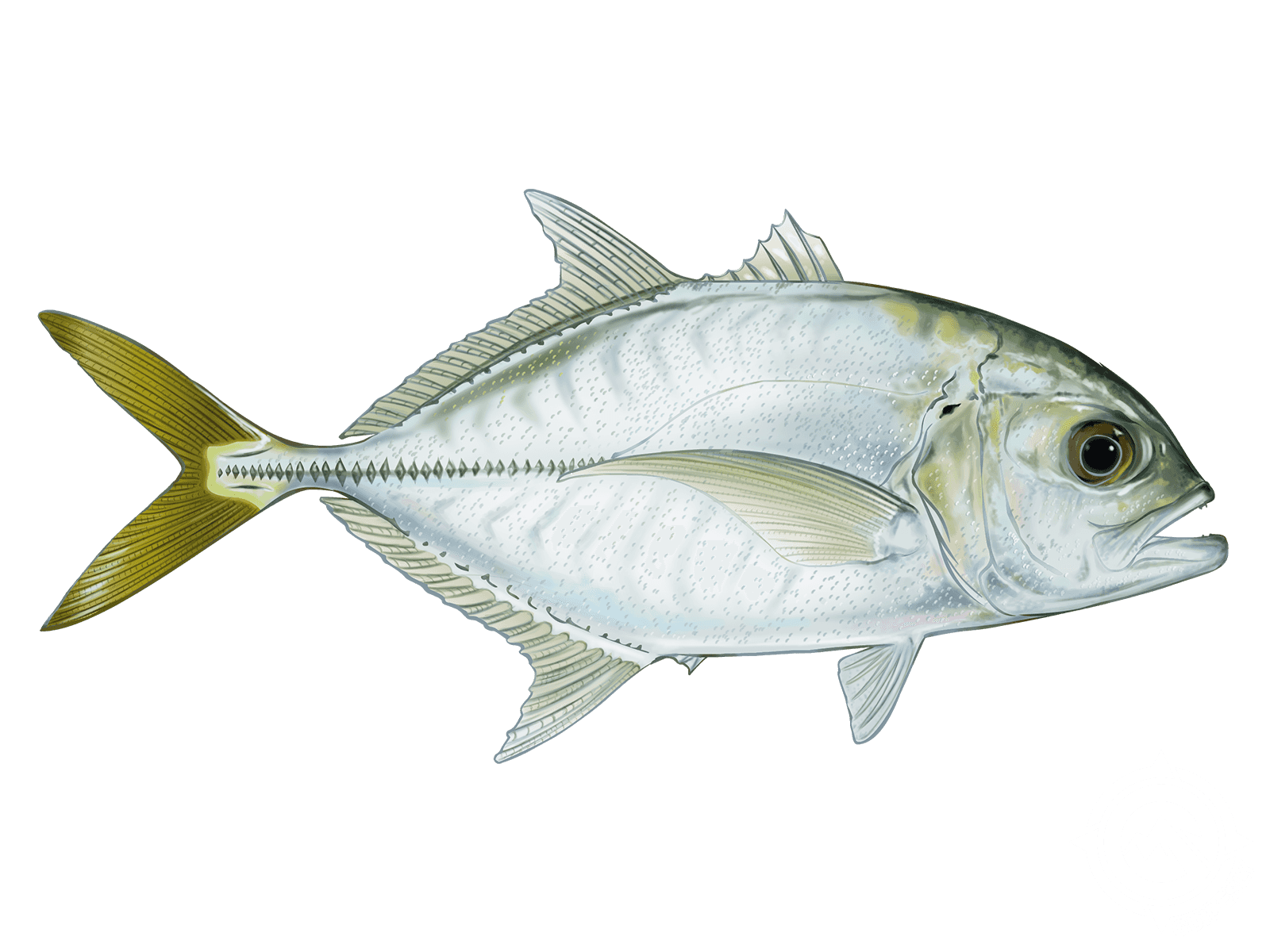Horse-Eye Jack

Species Details
Caranx Latus
Carangidae
Perciformes
Offshore
10 - 30 lbs.
24" - 40"
Horse-Eye Jack Fish Description
Also known as the Big-Eye Jack, the Horse-Eye Jack appear silver-blue in color. They have a blunt head though not as blunt as the Crevalle Jack. The Horse-Eye Jack has an elongated and deep body which makes it confusing to tell the difference from other Jacks. However, the most common distinguishing feature on the Horse-Eye Jack is the lack of dark spots. While it may have some dark spots on its gill covers, the Horse-Eye Jack does not have a dark spot on the base of its pectoral fins.
Its caudal fin has a dusky yellow color and its dorsal fin is split into two parts: the first part of the Horse-Eye Jack’s fin is split into 8 spines with one of the spines splitting into 19-22 rays. These fish also have blackish scutes that cover their bodies.
Another thing to notice is that they have large, well-developed eyes. The Horse-Eye Jack also has a well-developed eyelid.
Horse-Eye Jack Diet
Horse-Eye Jacks are carnivorous in nature. They like feasting on small fish, shrimps, and tiny invertebrates.
Horse-Eye Jack Size
Horse-Eye Jacks can become large in size. On average, Horse-Eye Jacks grow to 2 feet and 10 lbs. However, some managed to record that the largest Horse-Eye Jack ever caught was 3.3 feet and 30 lbs.
Interesting Facts about the Horse-Eye Jack
- Horse-Eye Jack often roams around in schools.
- Juvenile Horse-Eye Jack has five black columns on their flank which disappear as they grow older.
- Horse-Eye Jacks are pelagic fish. They often prefer staying near the reefs and off-shore oil rigs.
- They are normally anxious fish. Horse-Eye Jacks sometimes run away from divers. But they do like the bubbles that the divers create from their masks though.
- Horse-Eye Jack sometimes go through brackish waters. They are also capable of ascending rivers.
- The Horse-Eye Jack are common game fish and they are used as baits for other fish such as Blue Marlin, Atlantic Sailfish, Tarpon, and Snook.
- The Horse-Eye Jack are fast swimmers and can cover vast distances.
- Horse-Eye Jack is also a common food for Tuna and Dolphins.
- These Horse-Eye Jacks are currently considered highly vulnerable as a species and can be pushed to extinction. Anglers are often limited from fishing for Horse-Eye Jacks.
Horse-Eye Jack – Fishing Techniques: How to Fish for a Horse-Eye Jack
To fish for a Horse-Eye Jack, you can use live bait such as pinfish, mullet or, other small fish. Combine it with a jig, plug, spoon, and flies. Once you have that all prepared, find a good spot to fish.
The Horse-Eye Jack although caught on the coast can be found also in rivers. These fish are also known to ascend rivers from saline water bodies. If found in the middle of a saltwater body, usually, they are found in at least 140 meters deep of salt water.
To attract them, one good way is to imitate a diver’s bubbles. The Horse-Eye Jack is known to be attracted to these bubbles which could help if you have a device that can create such bubbles. Once they are there, you can drop your live bait and wait for them to bite.
Once they latch, do not slow down your pace. Quickly reel them in. These fish, due to being food to dolphins and tunas, are known to swim very quickly. The Horse-Eye Jacks will often feel like light taps instead of strong tugs (though this depends on the sensitivity of your rod) due to the speed they strike in.
Horse-Eye Jack Habitat
Horse-Eye Jacks can be found near oil rigs and reefs. Younger Horse-Eye Jacks can be found near shore with muddy bottoms. However, you also have to be careful with what you catch as they are also sometimes accompanied by the Crevalle Jack or the Puddingwife Wrasse.






